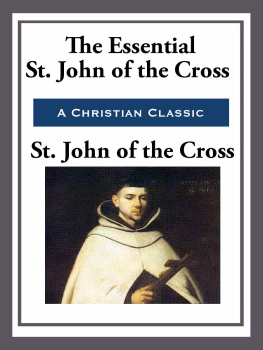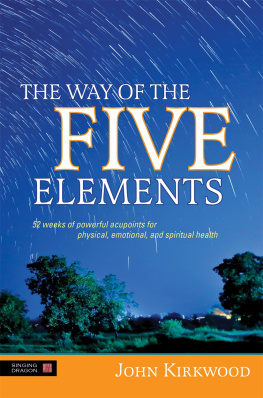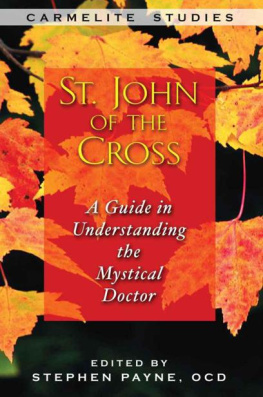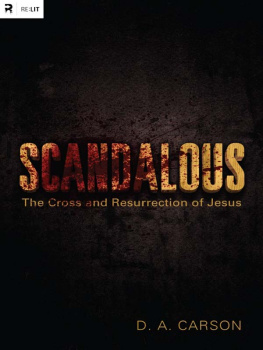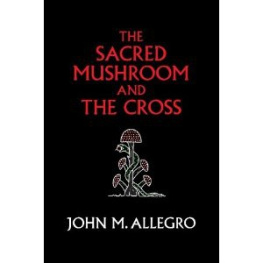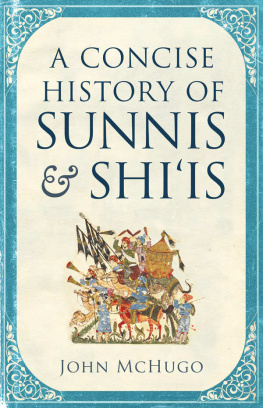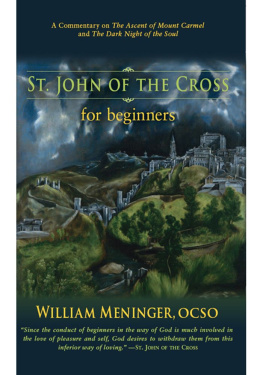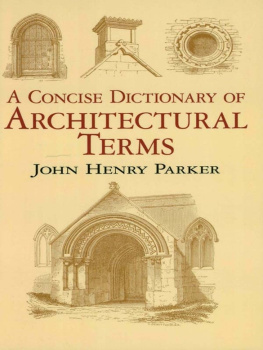John R. Cross - The Concise Book of Acupoints
Here you can read online John R. Cross - The Concise Book of Acupoints full text of the book (entire story) in english for free. Download pdf and epub, get meaning, cover and reviews about this ebook. year: 2014, publisher: Blue River Press, genre: Romance novel. Description of the work, (preface) as well as reviews are available. Best literature library LitArk.com created for fans of good reading and offers a wide selection of genres:
Romance novel
Science fiction
Adventure
Detective
Science
History
Home and family
Prose
Art
Politics
Computer
Non-fiction
Religion
Business
Children
Humor
Choose a favorite category and find really read worthwhile books. Enjoy immersion in the world of imagination, feel the emotions of the characters or learn something new for yourself, make an fascinating discovery.
- Book:The Concise Book of Acupoints
- Author:
- Publisher:Blue River Press
- Genre:
- Year:2014
- Rating:4 / 5
- Favourites:Add to favourites
- Your mark:
- 80
- 1
- 2
- 3
- 4
- 5
The Concise Book of Acupoints: summary, description and annotation
We offer to read an annotation, description, summary or preface (depends on what the author of the book "The Concise Book of Acupoints" wrote himself). If you haven't found the necessary information about the book — write in the comments, we will try to find it.
The Concise Book of Acupoints — read online for free the complete book (whole text) full work
Below is the text of the book, divided by pages. System saving the place of the last page read, allows you to conveniently read the book "The Concise Book of Acupoints" online for free, without having to search again every time where you left off. Put a bookmark, and you can go to the page where you finished reading at any time.
Font size:
Interval:
Bookmark:
The Concise
Book of Acupoints
John R. Cross

Copyright 2010, 2014 by John R. Cross. All rights reserved. No portion of this book, except for brief reviews, may be reproduced, stored in a retrieval system, or transmitted in any form or by any means electronic, mechanical, photocopying, recording, or otherwise without the written permission of the publisher. For information, contact Blue River Press.
First published in 2010 by
Lotus Publishing
Apple Tree Cottage, Inlands Road, Nutbourne, Chichester, PO18 8RJ, UK
This revised edition published in 2014 by
Blue River Press, an imprint of Cardinal Publishers Group
2402 N. Shadeland Ave., Suite A
Indianapolis, IN 46219
Illustrations Amanda Williams, John Tyropolis, Michael Evdemon and Ilaira Bouratinos
Text Design Wendy Craig
Cover Design Jim Wilkie
Printed and Bound in the United States of America
British Library Cataloguing in Publication Data
A CIP record for this book is available from the British Library
ISBN 9781935628286
eISBN 9781935628774
What Is an Acupoint? Traditional and Modern Concepts
Traditional Concepts
Traditional Chinese Medicine (TCM) has been practiced for over 5000 years as a way of maintaining health, not necessarily to ease symptoms. It is believed that acupuncture originated in India and was later spread to China, Egypt and Asia by Buddhist monks. It then transferred to Japan and other Far Eastern countries. It has only been popular in the West since the middle of the twentieth century. It was quaintly thought that warriors returning from war exhibiting spear and arrow wounds would slowly be healed of other conditions as their wounds healed, the site of the wound often having no bearing on the diseased part that improved. Over several decades, points were mapped out on the body that had an influence on certain internal organs and parts of the body if they were stimulated by pressure, needle (originally made from bamboo) or burning. These points were called acupuncture points, acupoints, xue or tsubo.
Acupoints on the body that possessed a similar internal organ or system affinity were joined together in a series of invisible energy lines called meridians or channels. Each of the meridians was named after the internal organ or system that it appeared to influence. The meridians housed the vital force or chi (ki or prana) and by affecting the acupoint the chi was sedated or stimulated. Until just a few years ago it was widely thought that the meridian system could be likened to a canal waterway system, and the acupoints to lock gates. When the acupoint is stimulated the lock gate is opened and the water flows through, energy once more flowing freely through the system.
The eleven meridians that are named after the internal organs they influence are; Large Intestine (LI), Small Intestine (SI), Stomach (ST), Gall Bladder (GB), Bladder (BL), Lung (LU), Heart (HT), Spleen (SP), Liver (LR), Kidney (KI) and Pericardium (PC). Added to these was the Triple Energizer (TE) channel. These twelve all exist as bilateral meridians. There are a further eight extraordinary meridians, six of which are composites of the original twelve, plus two unilateral channels named Governor (Gov) and Conception (Con).
Traditional forms of acupuncture and acupressure are not confined to China. Ayurvedic medicine has given us the amazing concept of the major and minor chakras that are considered to be whorls of energy that stem from a single acupoint on the physical body and permeate the layers of the subtle auric bodies. There are also Marma points another traditional Ayurvedic concept which states that there are 107 vital acupoints in the body that link the energy channels of the nerves, muscles and joints. These points are mostly used with pressure and incorporated into massage techniques but may be used in acupuncture as they seem to exist as a combination of meridian, non meridian, trigger and reflex points.
Yin and Yang
Although this concise book will not deal with acupuncture analysis and diagnosis or deeper aspects of philosophy, it is important that these two terms are understood as changes in the chi energy affect Yin and Yang each time an acupoint is influenced. These two words (properly pronounced inn and arng) are the two poles of chi and are opposite and yet complementary to each other. Yin and Yang philosophy forms the backbone of traditional Chinese, Japanese, Indian and tribal medicines (although they are sometimes known by different names). The ideas behind Yin and Yang developed from observing the physical world. It was observed that nature appears to group into pairs of dependent opposites. Thus, the concept of night has no meaning without the concept of day. As you will know, there is no such thing as absolute Yang or absolute Yin and an increment of one always appears in the other. The organs and meridians are either predominantly Yin or Yang (called Zang and Fu) the Yin organs being mostly solid in nature, and mostly essential to life, whereas the Yang organs are hollow and often peristaltic in nature. The Yin meridians are generally positioned along the antero-medial aspects of the limbs and torso and the Yang meridians on the postero-lateral. The Yin meridians therefore ape the organs in that they appear to be protected. Further divisions will be mentioned later in the chapter.
Yin | Yang |
Winter | Summer |
Cold | Heat |
Female | Male |
Dark | Light |
Chronic | Acute |
Flaccid | Spastic |
Stiffness | Mobility |
Oedema | Inflammation |
Hypotension | Hypertension |
Vital organs | Hollow organs |
Table 1.1 Yin and Yang equivalents (shortened version).
Acupuncture Nomenclature
In 2003 the World Health Authority decided to standardize acupuncture nomenclature so that each practitioner used the same names and initials. Until then it had been a hotchpotch of different titles and initials. The Pericardium meridian had been known as Heart Constrictor and even Circulation- Sex by kinesiologists. The Triple Energizer had also been known as the San Jiao, Triple Warmer or Three Heater. The initials used have also been through a number of changes before they were standardized. They now consist of all upper case initials.
The reason why the practice of acupuncture has proliferated in the West over the past couple of decades is that a great deal of its physiological rationale has been scientifically proven beyond doubt. It is certainly the reason why it is practiced in publicly funded medical organisations as well as those that are privately run. Medical acupuncture is not practiced on the foundation of vital force or any archaic diagnostic procedures such as tongue and pulse diagnosis, but rather by using formulaic procedures for given conditions or pain syndromes. Traditionalists would argue that this noble art (note not science) has been denigrated and watered down by removing that part of the philosophy that enabled the person to be treated holistically as opposed to merely easing the symptoms. It is an argument that will run and run. Rather than obstruction in the flow of circulation and chi described in the traditional texts, disease is understood to be caused by micro-organisms, metabolic failure, changes in DNA structure or signalling, or a breakdown in the immune system.
Next pageFont size:
Interval:
Bookmark:
Similar books «The Concise Book of Acupoints»
Look at similar books to The Concise Book of Acupoints. We have selected literature similar in name and meaning in the hope of providing readers with more options to find new, interesting, not yet read works.
Discussion, reviews of the book The Concise Book of Acupoints and just readers' own opinions. Leave your comments, write what you think about the work, its meaning or the main characters. Specify what exactly you liked and what you didn't like, and why you think so.


